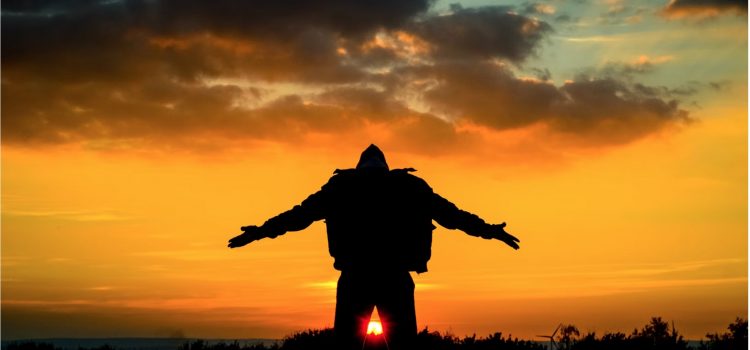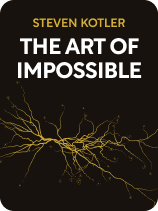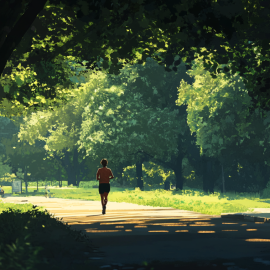

This article is an excerpt from the Shortform book guide to "The Art of Impossible" by Steven Kotler. Shortform has the world's best summaries and analyses of books you should be reading.
Like this article? Sign up for a free trial here .
What are the best ways to increase motivation? How can you increase motivation the natural way?
Goals feel impossible when you lack motivation and see no discernible way to get from where you are to where you want to be. In The Art of Impossible, bestselling author, award-winning journalist, and peak performance expert Steven Kotler draws on extensive neurobiological research to help readers learn ways to increase motivation and achieve seemingly impossible goals.
Keep reading to learn Kotler’s way to increase motivation, according to how your brain naturally works.
Kotler’s Way to Increase Motivation
Kotler argues that you’re more likely to practice full engagement and cultivate peak performance habits if you feel intrinsically motivated to pursue your goals.
In Kotler’s study of the ways to increase motivation, he found that two types of motivation drive your decisions, behaviors, and habits:
- Extrinsic motivation: You do things to receive external rewards such as money, fame, or social validation.
- Intrinsic motivation: You do things to receive internal rewards such as feelings of interest, enjoyment, or happiness.
According to Kotler, intrinsically motivated goals generate more pleasurable neurochemicals than extrinsically motivated goals. This is because intrinsically motivated goals align with your interests and passions—you choose to pursue these goals and improve your capabilities because they inspire positive emotions and you genuinely enjoy working toward them.
Tips for Using Your Inner Motivation
The first way to increase motivation involves exploring your interests to discover what intrinsically motivates you. According to Kotler, focusing your attention on your interests produces enough dopamine to initiate the feeling of motivation.
Tip 1: Cultivate Your Interests
Write down 25 things that you’re interested in learning more about. Narrow down your interests so that they’re as specific as possible. For example, instead of “gardening,” write: “the specific conditions required to grow cherry tomatoes all year round.” Instead of “solar energy,” write: “the process that allows solar panels to convert energy into usable power.”
(Shortform note: If you’re struggling to come up with 25 interests, Stanford professors Bill Burnett and Dave Evans (Designing Your Life) offer a practical way to hone in on what drives you: Track what activities make you feel joyful, engaged, and energized. Then, zoom in on the details of each activity you’ve logged to identify what specifically engaged your interest. Pay particular attention to who you were with, what you were doing, where you were, and what you were interacting with (for example, people, objects, or a machine). If your current schedule doesn’t offer much in the way of variety, reflect on past experiences that stand out as positive or engaging.)
Tip 2: Connect Your Interests Together
Once you’ve identified your interests, find ways to link your interests together. According to Kotler, the way your brain forms connections between different ideas generates more dopamine and increases your motivation.
- Look for areas where two or more of your interests share common ground or complement each other. Then link them together to create a new area of interest. For example, link “the specific conditions required to grow cherry tomatoes all year round” with “the process that allows solar panels to convert energy into usable power” to create this combined interest: “the possibility of using solar power to grow produce all year round.”
(Shortform note: If you’re having trouble linking your interests together to come up with new areas of interest, create a mind map to generate more ideas. Mind mapping employs the creative side of your brain by converting your initial ideas into a visual diagram that encourages you to make associations between disparate ideas. Every new idea you add stimulates additional ideas that trigger further associations—resulting in ideas that you wouldn’t normally consider.)
Tip 3: Explore Your New Areas of Interest
Once you’ve created connections between your interests, set aside time each day to learn more about your new areas of interest. Kotler argues that absorbing new information every day feeds your brain a continual stream of information while giving it time to naturally make connections between what you already know and what you’re learning. This generates more dopamine, which further increases your motivation to learn more.
- Spend 30 minutes every day learning more about your new areas of interest. Use a variety of media. For example, to explore “the possibility of using solar power to grow produce all year round,” you might listen to a podcast about sustainable living, read an article about how solar batteries work, or take notes from a book about indoor gardening.

———End of Preview———
Like what you just read? Read the rest of the world's best book summary and analysis of Steven Kotler's "The Art of Impossible" at Shortform .
Here's what you'll find in our full The Art of Impossible summary :
- A look at how some people can achieve seemingly impossible feats
- How to make your dreams more attainable
- A step-by-step process for developing peak performance habits






